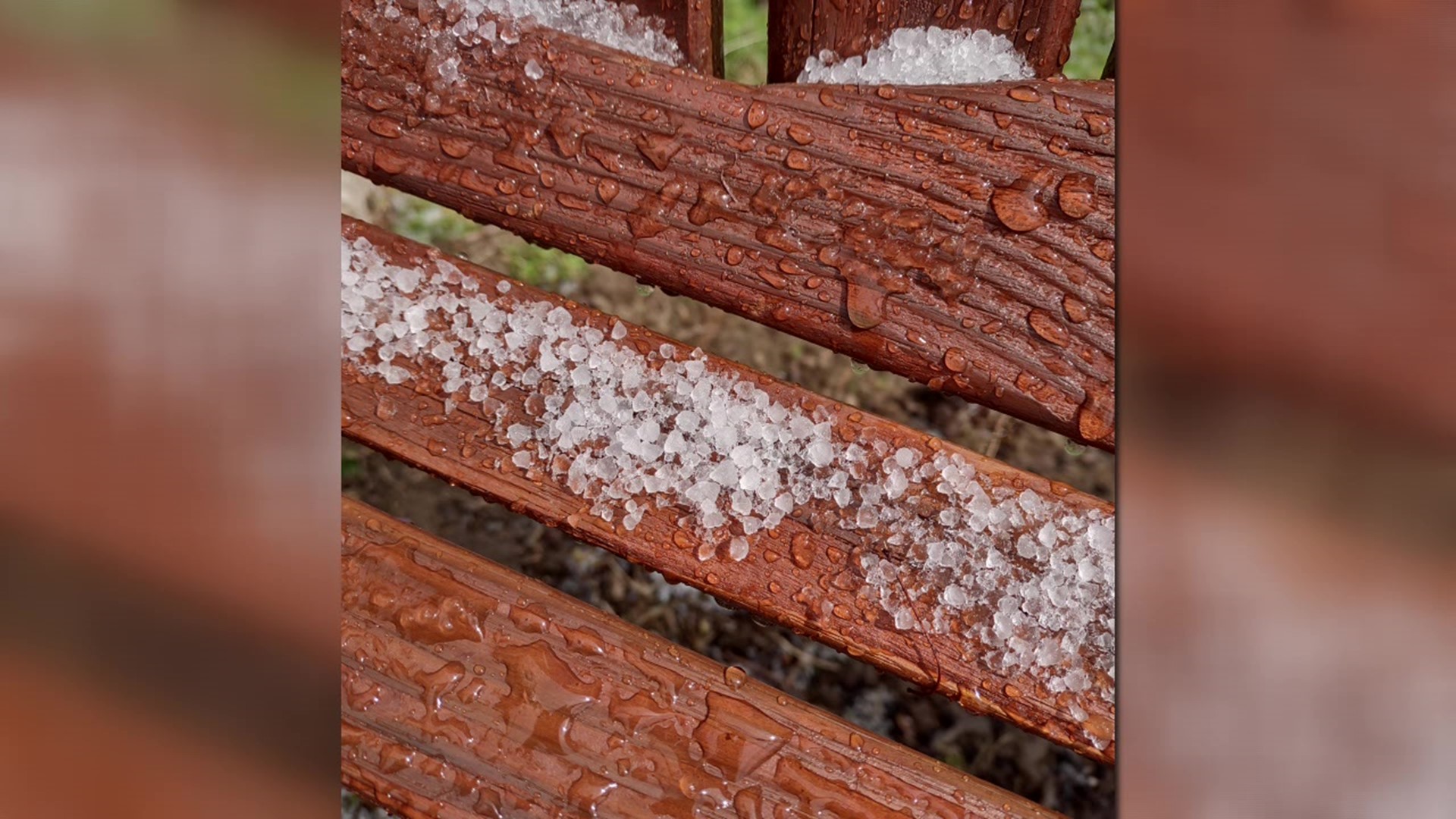PENNSYLVANIA, USA — When talking about a wintry mix of precipitation, which is something the Stormtracker 16 team has done quite a bit this season, you are probably familiar with these types: rain, freezing rain, sleet, and snow.
- Rain and snow are self-explanatory.
- Freezing rain freezes on contact with the ground and clings.
- Sleet refreezes just before it hits the ground and pings.
But there is another type of winter precipitation that we have seen in some storms over the past few weeks and is getting a lot of attention on social media. It's called graupel.
According to the National Weather Service, graupel is defined as snow that melts and becomes supercooled as it falls through a warm surface and forms ice pellets. In simpler terms, this is the process of graupel forming. Graupel begins as individual snowflakes in the upper atmosphere. If atmospheric conditions are right, as those snowflakes fall, they can interact with supercooled water droplets. That interaction causes the droplets to freeze onto the snowflakes, referred to as "riming."
The result is tiny white pellets.
While it's not the most common type of winter precipitation, it does happen more often this time of year because the conditions can be just right.
"The atmosphere has gotten pretty cold by this time of late winter. The low levels sometimes are able to warm up if you get a lot of heating, warm advection, or strong sun like we had today," said David Martin, National Weather Service.
Graupel is most often mistaken for hail or sleet. Meteorologists with the National Weather Service say it makes sense there is confusion about what exactly is falling from the sky. And with the winter we have had, it could really be any or all seasons on any given day.
"Especially when you have thunderstorms one day and showers one day, and the next day you have snowflakes, and then you go back to rain, then you go from 70 to 30 degrees."
WINTER TIPS: Check out severe weather tips on WNEP's YouTube channel.

